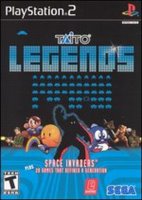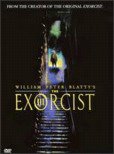 Genre: New age
Genre: New age
Released: Nov. 22, 2005
Verdict: &&&1/2 Let's review an important lesson of the 2000s that Enya's handlers apparently didn't pick up on: The new age diva can be a successful singles artist, not just a reliable (but slow to produce) album artist. Three years ago, A Day Without Rain's lead single, "Only Time," ascended to number 10 on the Billboard Hot 100, very belatedly giving Enya her first top 10 single. The song had several things going for it, including soundtrack placement and post-Sept. 11 emotions, but the key to its success was a pop radio mix that got her spins at top 40. More recently, Mario Winans scored a massive number two hit with "I Don't Wanna Know," which relies heavily on a sample of "Boadicea" from her first album, The Celts. Not only was the song quite good, it gave us the amusing credit: Mario Winans feat. Enya and P. Diddy. Who knew Celtic divas were so fly? She should be poised for another hit, but I've not heard a trace of the new single on the radio nor seen any press on the new album other than a couple of tepid reviews. The EP of "Amarantine" offers a standard single mix that sounds just like the album version. Where's "Amarantine (So Def Mix)" feat. Slim Thug and Chingy? Barring that, at least a pop mix would seem a wise move, given her recent exposure to younger record buyers/downloaders.
Despite the absence of savvy marketing, the new album is good, even if it treads water artistically and follows a number of well-established patterns. For example, the gently waltzing first single is the second track (hello, "Only Time," "Anywhere Is," and "Caribbean Blue"), and there is exactly one track, "The River Sings," about midway through that pulsates with an electronic groove (hello, "Ebudae"). There's singing in English, and there's heartfelt emoting in other languages, now including some gibberish called Loxian (hello, every Enya album). Nevertheless, Enya's soothing concoctions are almost always effective, tapping something that can only be called spiritual (and not in a strict religious sense, unless that's what you get from it). Highlights include opener "Less Than a Pearl," which features a signature soaring Enya melody and musically sounds almost like a leftover from The Celts, and "Drifting," a piano-driven instrumental that invites you to do just that. In a world too often lacking kindness, Enya is the most reassuring and comforting of artists, so there will be no complaints from me if she chooses to merely rewrite past successes.// Other music reviews // Madonna • Confessions on a Dance Floor
 Genre: Dance/electronica
Genre: Dance/electronica
Released: Nov. 15, 2005
Verdict: &&&&1/2After the commercial failure of American Life, it's no surprise that Madonna takes a radically different approach on Confessions on a Dance Floor, a shimmery, ballad-free dance album that is arguably her most compulsively listenable since Ray of Light. While American Life is underrated – "Love Profusion" ranks among her best songs ever, and the singles were well crafted, even if they failed to connect – I'll agree that the fun had gone out of it. The attempt at rapping was weak, and the jagged production style of Mirwais Ahmadzai, which worked better on Music, became taxing. (On Confessions, Ahmadzai is held over for one track, "Future Lovers," which turns out to be one of the stronger songs here.) Teaming with producer Stuart Price (of the little-known group Zoot Woman), Madonna gets her glitter ball groove back, creating a seamless electronica dish that pulsates with energy and vibrant melodies from start to finish. Lead single "Hung Up," which wraps a great pop hook around ABBA's "Gimme! Gimme! Gimme!," rightfully soared into the Billboard top 10 this week thanks to strong iTunes sales. "Jump" and "Sorry" seem likely singles, but a daring choice would be the chant- and string-filled "Isaac," six minutes of hypnotic bliss in the style of Ray of Light's "Shanti/Ashtangi" and the Music-era B-side "Cyberraga." It's reassuring, on Confessions, to see Madonna let go and have fun – something it seemed she had forgotten how to do. After the creative peak of Ray of Light, some disappointments were inevitable, but this return to form isn't one of them.// Other music reviews // Enya • Amarantine// Linkage // Official site - Madonna.com
 Genre: Retro compilation
Genre: Retro compilation
Released: Oct. 25, 2005
Game-play: &&&1/2
Presentation & extras: &&&1/2Loaded with 29 games, this collection throws in some that have no business appearing under the "legends" banner, but there are enough true classics here to make this an essential purchase for any member of the Atari generation. I felt like a lottery winner when I saw it would include Elevator Action, in which you make your way down an elevator- and escalator-filled office tower while shooting spies in the kneecaps and ducking in the red doors to steal documents. It's one of those games whose simplicity only enhances its appeal, and I can play it for ages without growing bored. I'd forgotten how much I love to see the spies tumble down the elevator shaft or get squashed underneath the elevator. I immediately noticed that the audio in Elevator Action seems less polished than that of the NES version, but maybe it's just me.
There are bigger names here, like Space Invaders, Jungle Hunt, Phoenix, Bubble Bobble and its sequel, Rainbow Islands. I actually never played Space Invaders in the arcade and am surprised at how difficult it is compared to the Atari 2600 version. Both its sequels are included, and, while Space Invaders Part 2 arguably doesn't tweak the game play enough, Return of the Invaders strays pretty far from the primitive original and appears to have been influenced by Galaga, even down to including a challenging stage. The most pleasant surprise is Tube It, a puzzler variation with dropping pieces for the Tetris crowd in which sections of pipe must be shifted to make connections from side to side before the screen fills to the top. It's about as compulsively playable as a puzzler gets. Speaking of puzzles, it seems odd to give us Super Qix here rather than its predecessor, Qix, the box-drawing game that may be the only title to make percentages fun. The sequel, Super Qix, relies on the gimmick of uncovering a picture as the player chips away at the game board.
Unfortunately, the game list is peppered with some pretty awful stuff amongst the winners. Some of the worst are Space Gun, a first-person alien shooter aboard a space vessel; Electric Yo-Yo, which amounts to gobbling up dots; and Plotting, a block-busting game that just doesn't pop. There is one uninspired racing game and several ordinary fighting titles. Colony 7, in which the player defends buildings from incoming missiles, is a difficult Missile Command clone, and Plump Pop, a cute game in which the player bounces an animal off a trampoline to pop bubbles in the sky, is impossible to execute with the PS2 controller.
I've found instances where the difficulty settings are a bit confounding. In Elevator Action, for example, the easy setting starts with six men and offers a free man at 10,000. The medium setting starts with three men and makes you crawl to 15,000 – too much – to earn the freebie. Neither setting seems logical. Thankfully, you can rectify this with a custom setting, but this nice feature is hampered by the fact that the game won't save high scores for games played with customized difficulty. For gamers who enjoy cheat codes, some are included in the game descriptions.
Despite some filler, Taito Legends is neck-and-neck with Midway Arcade Treasures for best retro-gaming compilation. While the few interviews with game designers aren't as fun or interesting as those of the first Midway collection, the developers deserve praise for the presentation. The interface is sleek and functional, and I'm in love with the techno menu music that's based on the steady march of the Space Invaders. It's nearly as addictive as clocking those Elevator Action baddies in the kneecaps.// The games //Battle Shark, Bubble Bobble, Colony 7, Continental Circus, Electric Yo-Yo, Elevator Action, Exzisus, Gladiator, Great Swordsman, Jungle Hunt, Ninja Kids, The New Zealand Story, Operation Thunderbolt, Operation Wolf, Phoenix, Plotting, Plump Pop, Rainbow Islands, Rastan, Return of the Invaders, Space Gun, Space Invaders, Space Invaders Part 2, Super Qix, Thunderfox, Tokio, Tube It, Volfied, Zoo Keeper// Linkage //The impressive official site, with game information and screen captures, downloads, a forum and more.// Related post //NAMCO Museum 50th Anniversary Arcade Collection
 Genre: Horror sequelsReleased: Aug. 17, 1990Director: William Peter BlattyVerdict: &&&1/2The Halloween binge continued with The Exorcist III: Legion, a title that musters all the dread you'd feel before watching a movie like, say, Halloween: Resurrection. Good news, though: This sequel is a pleasant surprise, free of the demons of cheap scares and special effects. There's no trace of Linda Blair vomiting pea soup; this movie takes a quieter, thoughtful approach -- something nearly lost altogether in nail-biters of the 2000s. The Exorcist author William Peter Blatty, in his sole directorial turn, constructs more of a mystery here as George C. Scott, in a warm and engaging performance as Lt. Kinderman, investigates what appear to be serial killings in the style of the long-dead Gemini Killer (Brad Dourif, devouring scenery as an eloquent mental patient). Long story short, the soul of Father Karras (Jason Miller), who took that unfortunate tumble out the window in the first movie, is being held hostage by sinister forces within the Dourif character. Early on, there's a surprising amount of humor in the dialogue between Kinderman and Father Dyer (Ed Flanders), and it serves as an effective counterpoint as the stage is set with gruesome killings by means of decapitation and exsanguination. Dialogue positively sings; Kinderman's confrontations with the killer are symphonies of verbal sparring. When pressed by the killer to say that he believes, I particularly like skeptical Kinderman's reply: "I believe in disease, suffering, every single ugly thing …" That's not verbatim, but you get the idea. There is an exorcism scene near the end, but Blatty wisely doesn't try to make it rival that of the first movie. Rarely mentioned or even seen on cable these days, Exorcist III is a classy, stylish horror film that casts out the loud, garish scares of so many inferior films and blesses the viewer with mystery and high tension. // DVD notes // Picture quality is superb, but the lone extra is a brief theatrical trailer.
Genre: Horror sequelsReleased: Aug. 17, 1990Director: William Peter BlattyVerdict: &&&1/2The Halloween binge continued with The Exorcist III: Legion, a title that musters all the dread you'd feel before watching a movie like, say, Halloween: Resurrection. Good news, though: This sequel is a pleasant surprise, free of the demons of cheap scares and special effects. There's no trace of Linda Blair vomiting pea soup; this movie takes a quieter, thoughtful approach -- something nearly lost altogether in nail-biters of the 2000s. The Exorcist author William Peter Blatty, in his sole directorial turn, constructs more of a mystery here as George C. Scott, in a warm and engaging performance as Lt. Kinderman, investigates what appear to be serial killings in the style of the long-dead Gemini Killer (Brad Dourif, devouring scenery as an eloquent mental patient). Long story short, the soul of Father Karras (Jason Miller), who took that unfortunate tumble out the window in the first movie, is being held hostage by sinister forces within the Dourif character. Early on, there's a surprising amount of humor in the dialogue between Kinderman and Father Dyer (Ed Flanders), and it serves as an effective counterpoint as the stage is set with gruesome killings by means of decapitation and exsanguination. Dialogue positively sings; Kinderman's confrontations with the killer are symphonies of verbal sparring. When pressed by the killer to say that he believes, I particularly like skeptical Kinderman's reply: "I believe in disease, suffering, every single ugly thing …" That's not verbatim, but you get the idea. There is an exorcism scene near the end, but Blatty wisely doesn't try to make it rival that of the first movie. Rarely mentioned or even seen on cable these days, Exorcist III is a classy, stylish horror film that casts out the loud, garish scares of so many inferior films and blesses the viewer with mystery and high tension. // DVD notes // Picture quality is superb, but the lone extra is a brief theatrical trailer.
 Genre: New age
Genre: New age


